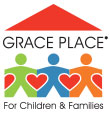Naples, Florida is known for its white sandy beaches, pristine waters, serene nature reserves, great shopping and its more than 80 championship golf courses. Touted by Forbes magazine as one of “America’s Millionaire Capitals,” this city by the sea is the southern home to some of the country’s wealthiest and most influential people. But there is a dense pocket of need in Naples not many people are aware of. Just six miles from one of the richest zip codes in America rests the four-square-mile Naples’ community of Golden Gate City. Contrary to the name, life is not so golden for many that live here.
Families Served at Grace Place:
THE VARIABLES
Students from Golden Gate live in the highest pocket of need in Collier County, outside of Immokalee. Golden Gate City has a higher poverty rate, lower earnings, lower family income and higher rates of unemployment than the rest of the state.
